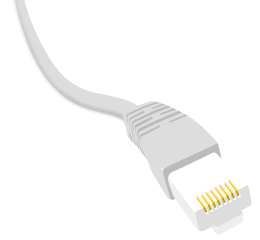
Network cables can be incredibly confusing, especially with names like Cat 3, Cat 5e, Cat 6, and Cat 6a, as well as more generic titles like “Ethernet cable.” However, if you know the differences between categories, getting the correct networking cable can be easy, and the rapid reductions in cable costs make buying high-performance cables inexpensive.
Network Cable Types
The are many types of network cables in use today, but the most common cables fall into these 3 categories:
- Cat 3 – Older networking cables; not commonly used today.
- Cat 5 / Cat 5e – Newer networking cables; used for Ethernet and similar uses.
- Cat 6 / Cat 6a – Gigabit Ethernet networking cables; standard for commercial use.
Category 3 Network Cables
Category 3 network cables, commonly called Cat 3 cables, were the old standard for networking cables during the 1990s. These cables were unshielded, meaning they were not actively protected from interference from other devices. Cat 3 cables fell out of use when the Cat 5 standard was established. Although these cables are not commonly available, they may still be purchased from some wholesalers and legacy computer stores.
Category 5 And 5e Network Cables
Category 5 network cables, commonly known as Cat 5 cables, are twisted-pair cables designed for high signal integrity. These cables come in both shielded and un-shielded varieties; shielded cables prevent interference from other devices and generally result in higher performance without a significant increase in price. The Cat 5 specification has been superseded by the Cat 5e specification, meaning that most newly manufactured cables have more stringent “Cat 5e” specifications, resulting in better quality and performance. Cat 5 and 5e cables have 8 pins on their connectors, as pictured to the right.
Cat 5 cables are used for most home networks and smaller office network configurations; they are compatible with most computer networking cards, as well as wired and wireless routers and home networking components. When purchasing cables for these devices, choose shielded Cat 5e cables whenever possible.
